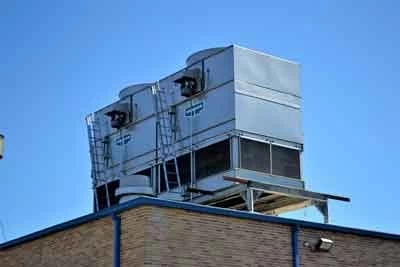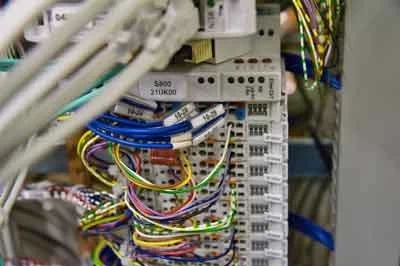How Artificial Intelligence is Reshaping HVAC Efficiency

Traditionally, HVAC control within building automation systems has relied on rule-based systems and human programmed schedules. These systems, while effective, leave significant room for further optimization. The emergence of artificial intelligence (AI) and machine learning (ML) offers a paradigm shift in HVAC management, enabling systems to proactively learn, adapt, and achieve unprecedented levels of energy efficiency.
Visit Our Building Automation Study Course
How AI Transforms HVAC Operations
Data-Driven Pattern Recognition: AI algorithms excel at analyzing vast datasets from building sensors, weather data, occupancy patterns, and energy pricing signals. This analysis goes far beyond what a human operator can manage, revealing correlations and trends that inform smarter operational decisions.
Predictive Analytics and Optimization: Instead of merely reacting to current conditions, AI-powered systems can predict energy consumption patterns, anticipate thermal loads within the building, and proactively adjust HVAC setpoints, fan speeds, and equipment staging for optimal efficiency.
Predictive Maintenance: By analyzing real-time data on equipment performance, AI algorithms can detect subtle anomalies indicative of impending problems. This enables predictive maintenance, where interventions can be scheduled before faults escalate into major breakdowns or efficiency losses.
Dynamic Adaptation: AI-powered HVAC control is not a "set it and forget it" situation. Systems continually learn and refine their models, optimizing to changes in the building environment, occupancy patterns, weather fluctuations, or shifting energy tariffs.
Types of AI used in HVAC Optimization
Machine Learning (ML): Various ML algorithms, including supervised and reinforcement learning, allow the system to build predictive models based on historical data and adapt through continuous feedback.
Natural Language Processing (NLP): NLP enables systems to understand and respond to voice commands or text-based inquiries, further enhancing user interaction with smart HVAC control.
Computer Vision: In some cases, computer vision is used to analyze occupancy patterns, helping the system optimize heating and cooling in different building zones based on real-time occupancy data.
Practical Applications of AI
Demand-Controlled Ventilation: AI can analyze air quality data and occupancy patterns to adjust ventilation rates, ensuring good air quality while avoiding over-ventilating unoccupied spaces – a major energy saving opportunity.
Thermal Comfort Modeling: Going beyond simple temperature control, AI can incorporate factors like humidity levels and learned occupant preferences to create tailored thermal comfort profiles for different building zones.
Chiller Plant Optimization: In larger buildings with complex chiller setups, AI algorithms can optimize sequencing, set points, and water flows within the chiller plant in response to dynamically changing thermal loads, significantly boosting overall efficiency.
Advantages and Considerations
Advantages
Measurable Energy Savings: Studies suggest that AI-driven HVAC optimization can achieve energy savings of 20-40% compared to conventional rule-based control.
Reduced Operational Costs: Proactive maintenance facilitated by AI decreases maintenance costs and reduces the risk of expensive breakdowns.
Enhanced Occupant Comfort: AI allows for a more nuanced approach to thermal comfort, addressing individual preferences and ensuring a better overall indoor environment.
Considerations
Data Quality: The effectiveness of AI relies heavily on the abundance and quality of data. Inadequate sensor networks or uncalibrated sensors lead to poor system performance.
Initial Setup and Expertise: AI-powered platforms may require specialized expertise to set up, fine-tune algorithms, and interpret the system's outputs.
Explainability: Some advanced AI models ("black box" approaches) can be very effective but difficult to explain. Facility managers might need ways to understand the reasoning behind the system's decisions.
AI is poised to revolutionize the way HVAC systems are controlled and managed in buildings. The ability to unlock hidden patterns, continuously optimize operations, and prevent problems before they occur marks a significant leap in efficiency, comfort, and sustainability. As AI technology matures and becomes more accessible, widespread adoption across new and retrofitted buildings is likely to accelerate, fundamentally altering the landscape of building automation in the years to come.







